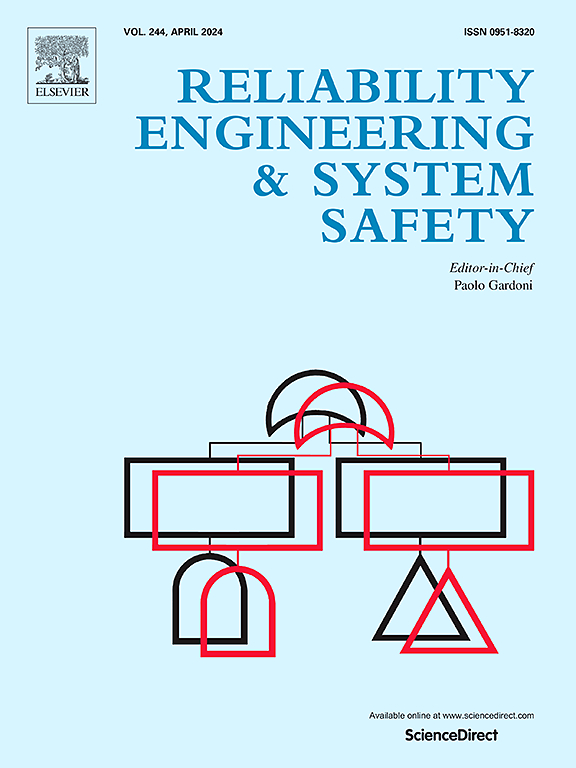A new approach for product reliability prediction by considering the production factory lifecycle information
IF 9.4
1区 工程技术
Q1 ENGINEERING, INDUSTRIAL
引用次数: 0
Abstract
Product reliability prediction is essential for OEMs to plan product maintenance and design improvement. Traditional approaches rely on 'product' lifecycle data for reliability prediction, often not capturing the uncertainties in OEMs' decision-making. To address this, the present work focuses on 'factory' lifecycle information in reliability prediction by introducing the concept of 'factory age,' i.e., cumulative interval for the observed factory lifecycle. The failure times for each product, in each factory age interval, were used to estimate the Weibull parameters, creating temporal data. A combination of grey- and support vector machine (SVM)-models, which complement each other in capturing global and local trends, and handling uncertainty from limited temporal data, was proposed to forecast the Weibull parameters accurately in the future factory age interval. The proposed approach was validated on two failure modes in a factory-producing turning centers, using data from the first 11 factory age intervals for model development. Reliability predictions for the last three intervals achieved root mean square errors (RMSEs) of 0.67 % and 1.48 % for failure modes I and II. Comparatively, individual grey (4.37 %, 5.11 %) and SVM (8.03 %, 10.60 %) models yielded higher RMSEs, while other reported models in literature showed in the range of 1.63 %–34.07 %, demonstrating the proposed approach's efficacy.
求助全文
约1分钟内获得全文
求助全文
来源期刊

Reliability Engineering & System Safety
管理科学-工程:工业
CiteScore
15.20
自引率
39.50%
发文量
621
审稿时长
67 days
期刊介绍:
Elsevier publishes Reliability Engineering & System Safety in association with the European Safety and Reliability Association and the Safety Engineering and Risk Analysis Division. The international journal is devoted to developing and applying methods to enhance the safety and reliability of complex technological systems, like nuclear power plants, chemical plants, hazardous waste facilities, space systems, offshore and maritime systems, transportation systems, constructed infrastructure, and manufacturing plants. The journal normally publishes only articles that involve the analysis of substantive problems related to the reliability of complex systems or present techniques and/or theoretical results that have a discernable relationship to the solution of such problems. An important aim is to balance academic material and practical applications.
 求助内容:
求助内容: 应助结果提醒方式:
应助结果提醒方式:


